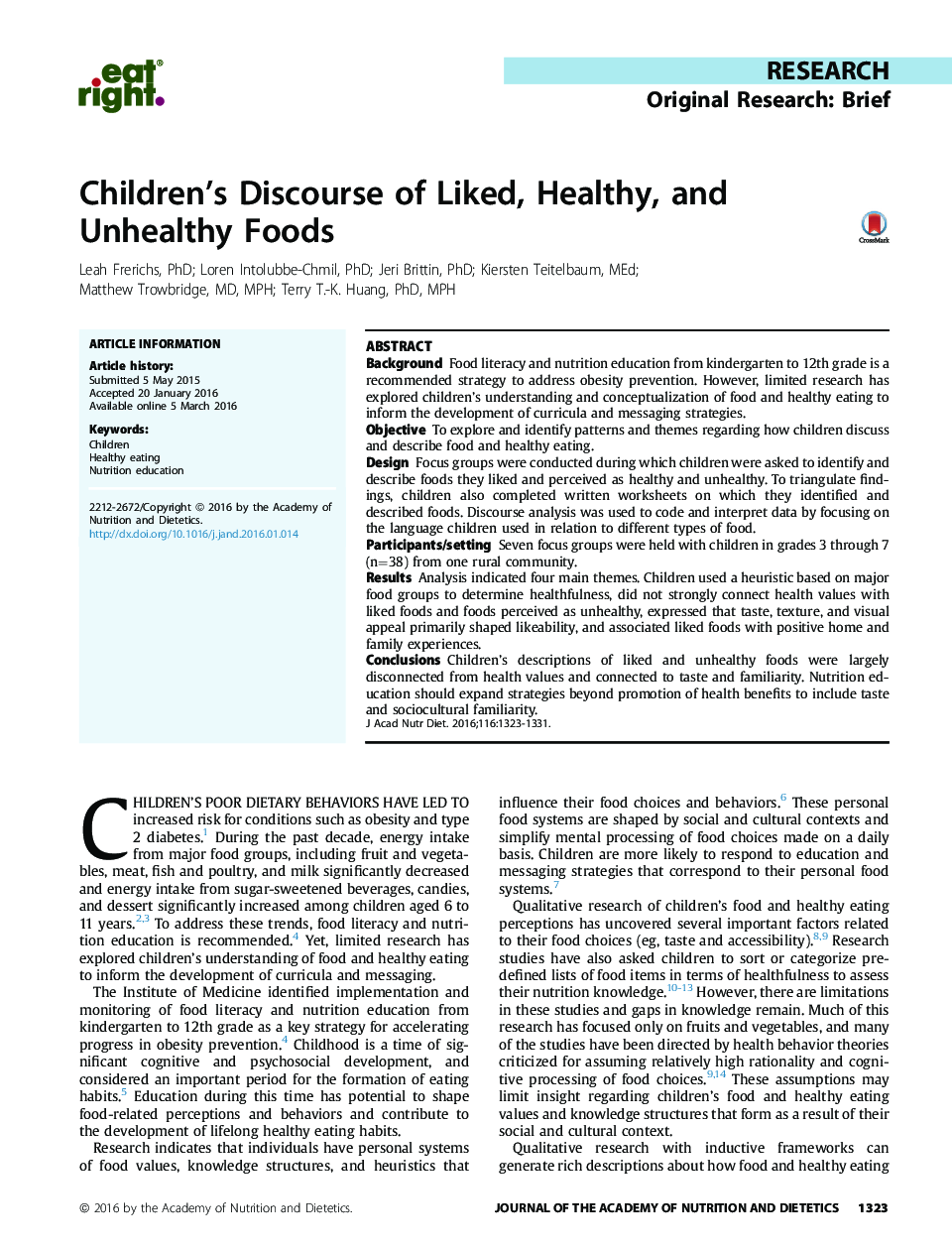| Article ID | Journal | Published Year | Pages | File Type |
|---|---|---|---|---|
| 2653054 | Journal of the Academy of Nutrition and Dietetics | 2016 | 9 Pages |
BackgroundFood literacy and nutrition education from kindergarten to 12th grade is a recommended strategy to address obesity prevention. However, limited research has explored children’s understanding and conceptualization of food and healthy eating to inform the development of curricula and messaging strategies.ObjectiveTo explore and identify patterns and themes regarding how children discuss and describe food and healthy eating.DesignFocus groups were conducted during which children were asked to identify and describe foods they liked and perceived as healthy and unhealthy. To triangulate findings, children also completed written worksheets on which they identified and described foods. Discourse analysis was used to code and interpret data by focusing on the language children used in relation to different types of food.Participants/settingSeven focus groups were held with children in grades 3 through 7 (n=38) from one rural community.ResultsAnalysis indicated four main themes. Children used a heuristic based on major food groups to determine healthfulness, did not strongly connect health values with liked foods and foods perceived as unhealthy, expressed that taste, texture, and visual appeal primarily shaped likeability, and associated liked foods with positive home and family experiences.ConclusionsChildren’s descriptions of liked and unhealthy foods were largely disconnected from health values and connected to taste and familiarity. Nutrition education should expand strategies beyond promotion of health benefits to include taste and sociocultural familiarity.
